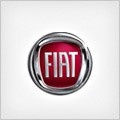
FIAT Dino Spider
Generations Timeline, Specs and Pictures

Named after Enzo Ferrari’s son, Alfredo “Dino” Ferrari, Fiat introduced the Dino to help Scuderia Ferrari homologate a V6 engine for Formula 2 racing cars.
The FIA regulations stated that a carmaker must produce at least 500 units from an engine in at least 500 units and install them in a production vehicle to receive the homologation as a racing engine. Ferrari and Fiat signed an agreement in 1965, and a new car was born: the Dino.
Fiat employed Pininfarina to create the convertible version of the 1967 Coupe, which was designed by Bertone. The 1969 Dino might be recognized by its front fascia. Unlike the 1967 version, which featured a metallic grille covering the entire area between the headlights, the 1969 version was fitted with a black grille and only two horizontal chromed slats.
The interior featured two bucket seats covered in leather, and the wood trim on the dash inspired more of a GT vehicle than light and nimble roadster. An instrument panel with six dials and gauges was placed in front of the driver. On the center stack, the carmaker installed a radio and a clock. Pininfarina managed to hide the soft-top behind the rear seats and covered it with a vinyl material.
More modifications came under the bodywork. Fiat introduced a rear independent suspension, which improved both comfort and the handling of the little roadster. Under the hood, it planted a 2.4-liter engine that offered 180 hp.

Fiat introduced the Dino Spider a year before the coupe version, which was an unusual way to launch a new model range, but it was a success story.
When Ferrari needed a production vehicle to install their 2.0-liter V6 units in 500 vehicles, it turned its eyes toward the Italian carmaker Fiat. The latter agreed and started to build a car around that engine, and that’s how the Dino was born. Ferrari got its FIA approval to install the engine in race cars, and Fiat got the golden egg.
Following Ferrari’s expertise, Fiat asked Pininfarina to design the coupe’s open-top version, which was done by Bertone Studios. The car featured four round headlamps and a chromed metallic grille at the front. Its wave-like sideline was raised above the wheel arches. Pininfarina managed to make a well for the hood behind the seats and covered it with a vinyl cover.
Inside, Fiat installed an unusual-looking instrument panel with two large dials for the tachometer and speedometer in individual casings and five additional gauges for various engine systems such as fuel, coolant temperature, oil pressure, charging, and a clock. The 2+2 seating position was offered with two bucket-seats at the front and two individual seats in the rear, separated by a center armrest.
Fiat installed a 2.0-liter V6 engine designed by Aurelio Lampredi, who previously made other Ferrari engines. Its flaw was the rear suspension, which was not suitable for a sports car, but it was good enough for those times.























































